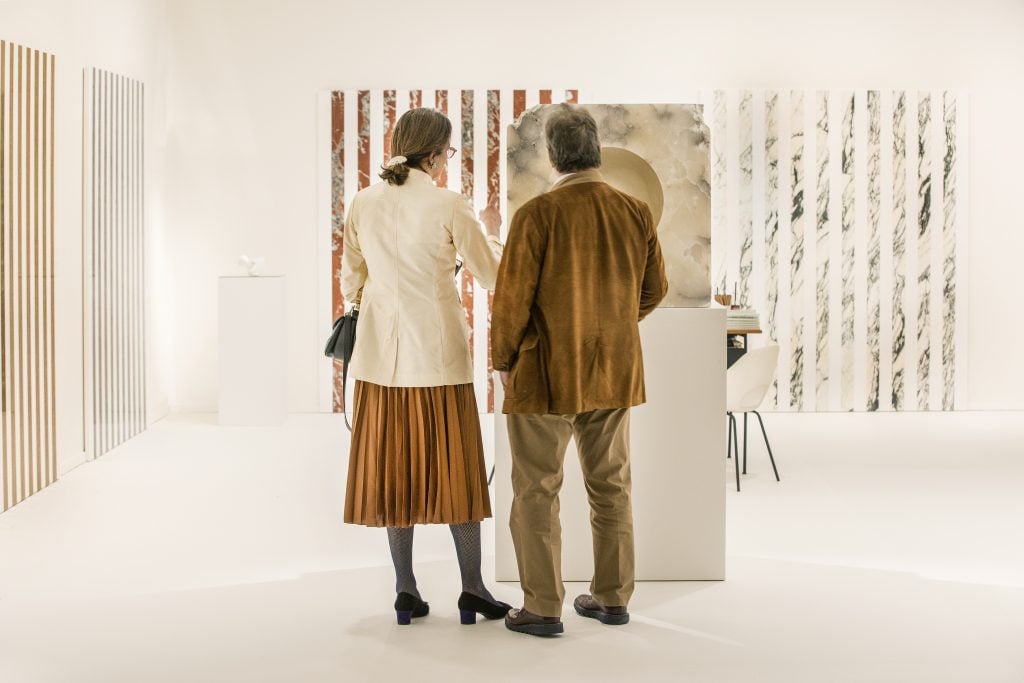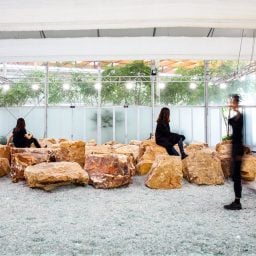Every Monday morning, Artnet News brings you The Gray Market. The column decodes important stories from the previous week—and offers unparalleled insight into the inner workings of the art industry in the process.
This week, preparing for a different kind of senior moment….
MOVING THE NEEDLE
Last Monday, pharmaceutical behemoth Pfizer published preliminary data showing its coronavirus vaccine to be more than 90 percent effective at safeguarding trial participants from contracting the dreaded malady. If the current success rate and the accompanying absence of major side effects both hold, the drug would rank among the most potent vaccines ever developed—a game-changing prospect for the world at large and the broader economy. At the same time, caveats about the drug’s distribution also raise the specter of an art-market recovery that may be forced to unfurl in phases, with the old guard counterintuitively tasked with leading the way early on.
Monday’s breakthrough makes Pfizer (which is working in partnership with German pharma firm BioNTech) the first drugmaker to publish viable results from its coronavirus vaccine’s final-stage clinical trials. Although additional testing and documentation still needs to be completed, Carl Zimmer of the New York Times reported that the company is now poised to petition the US Food and Drug Administration to authorize the vaccine for emergency use within weeks. If there are no setbacks in the approval process, he deemed it a “reasonable expectation” that Pfizer could have up to 20 million doses ready to distribute in January 2021.
But don’t start dreaming about blithely air-kissing your way through Frieze Los Angeles in February just yet. Although Pfizer’s data blasts a ray of hope through these dark days, it does not necessarily signal an imminent end to our long international nightmare. For starters, neither Pfizer nor anyone else knows at this point how long the immunity provided by the company’s vaccine will actually last. It could cover recipients for a lifetime, as with the measles vaccine… or it could fade out after as little as a few months. This mystery alone should keep our expectations in check for the time being.
The drug’s physical properties blow a few potholes into the road to recovery too. Pfizer’s vaccine must be transported and stored at what the Times calls “ultra-cold temperatures,” as low as minus-80 degrees Celsius (minus-112 degrees Fahrenheit). Which means they’re not just tossing these bad boys in wooden crates and trucking them cross-country in the first air-conditioned 18-wheeler they can pull off the lot; a serious logistical Rubik’s Cube will need to be solved to ensure viability. Just as important, the drug requires two doses received two weeks apart to become effective. This means, of course, that the 20 million doses projected to be ready by January will only actually be able to inoculate half that many people (and if any members of that lucky cohort miss their second appointment, the number drops even lower).
Fittingly, it’s this caveat about the extreme scarcity of a valuable good that creates an interesting turn in the art market’s path back to normalcy.
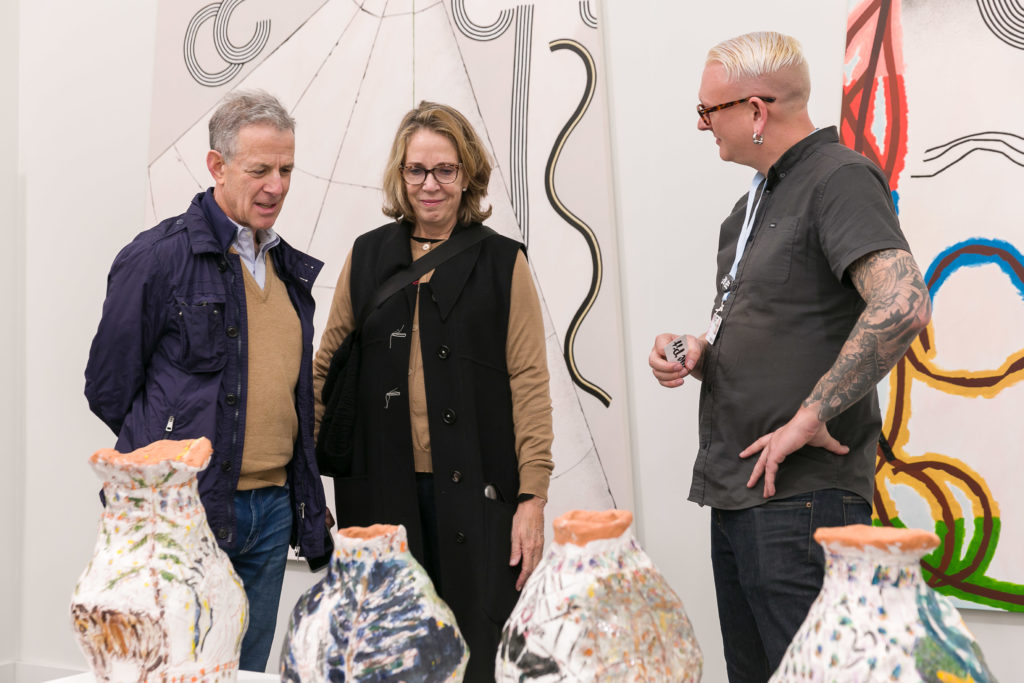
Visitors engaging with gallerists at Frieze Los Angeles. Photo: Mark Blower, courtesy of Frieze.
THE SILVER WAVE
Since Pfizer won’t be able to thunder out of the gate post-New Year’s with enough doses for everyone in the US, let alone the many other countries where the virus is raging, the company will inevitably cooperate with government and public-health officials to ration the vaccine for the demographics at highest risk. Frontline healthcare workers make up one group certain to get priority, and based on the harrowing journalistic snapshots we have of their lives right now, I suspect it will be several months before even the wealthiest doctors and surgeons have much time to leverage their immunity for leisure activities like swanning through galleries.
But the other major demographic poised for early access to the vaccine consists of seniors—a group that controls a huge amount of wealth and collects a lot of art. This sets up the prospect of an IRL art world where, for at least a few months, the only people with carte blanche to gallery-hop, travel, and mass-gather like it’s 2019 will be the elder statesmen.
At first, visions of this silver wave crashing over the cultural landscape might not seem like much more than an amusing oddity for an industry that prides itself (not always justifiably) on celebrating up-and-coming talent and a nonstop, high-octane lifestyle best suited to the young. I keep imagining an IRL art-world adaptation of Last Vegas, the absurd 2013 comedy that featured Morgan Freeman, Michael Douglas, and Robert De Niro as a bachelor party raising geriatric hell in Sin City. Who is the Tolga of the Silent Generation, and how soon can they hobble out of retirement?
However, this temporary senior moment would raise at least three meaningful questions about the art market’s survival—questions that will be more urgent than ever because of the rapid resurgence of the virus. With the US averaging more than 130,000 new infections daily during the two-week period that ended last Friday, and even New York imposing new restrictions to try to head off catastrophe, I’m convinced the heartening activity we saw in Gotham’s galleries between Labor Day and Halloween won’t be around much longer. (True, dealers in Germany and France have so far been allowed to stay open even as a second round of government lockdowns shuttered museums, but their for-profit counterparts in the UK haven’t been as fortunate.)
If the pandemic roars back so ferociously that many younger collectors no longer feel safe visiting galleries this winter, buyers’ widespread distaste for online viewing rooms means that vaccinated senior collectors would take on outsize importance. Their fates will be impacted, if not determined, partly by the following trio of unknowns…
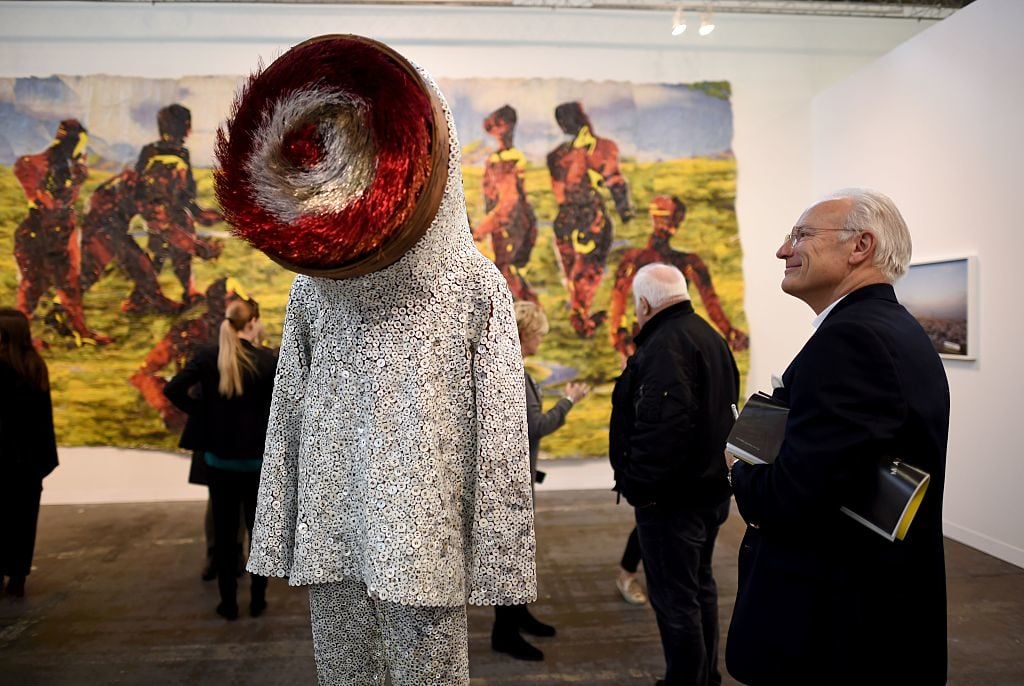
A Nick Cave Soundsuit at the 2016 Armory Show. Photo: Timothy A. Clary/AFP/Getty Images.
1. How adventurous will older collectors be in terms of the artists and galleries they patronize?
There’s a stereotype that buyers in and above their 60s tend to prefer established artists, high-end galleries, and “safe” artworks… but it’s not always earned. Some of the longest-tenured collectors I know double as the most rabid supporters of emerging talent, scrappy dealers, and radical acquisitions, largely because they understand how crucial those constituents are to the stability of the overall gallery ecosystem. How widely this attitude permeates the silver wave could help determine how many of the ecosystem’s more vulnerable species weather the cold.
2. How widely will older collectors be willing to travel?
My sense is that the supposed benefits of returning to a more localized art world haven’t really materialized many places in the virus-ravaged West other than New York and possibly London. If I’m right, this puts a premium on enticing committed collectors to board planes for IRL viewings. I would expect galleries clustered in other cities, both permanently and in new seasonal outposts like Palm Beach, to band together to organize field trips for vaccinated VIPs. Fairs are likely to cooperate with these efforts, too, as a way of providing value to their exhibitors while public-health restrictions keep the events themselves on ice. But how appealing these sojourns will be remains an open question.
3. How much preferential access will older collectors enjoy to in-demand works?
My previous query plugs right into this one. Most collectors still like to see works in person before committing to buy, and sales often originate at opening-night dinners and other social engagements that will be uniquely hospitable to vaccinated seniors this winter. It’s true that older, wealthier, longer-established buyers usually have an advantage in this realm anyway. But targeted vaccine distribution could tilt the market even further in their favor in early 2021.
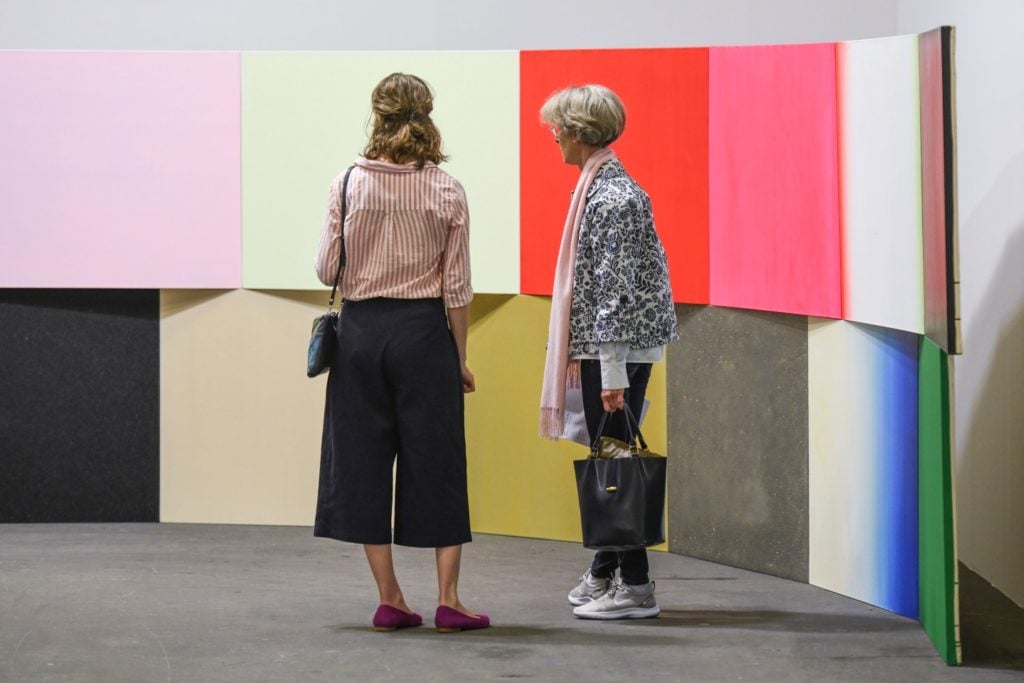
Installation view of Peres Projects at Art Basel 2019. Courtesy Art Basel.
To be clear, I don’t want to exaggerate the gravity of a silver wave to the art trade. The latest editions of Shanghai’s ART021 and West Bund Art & Design fairs proved the market is already back to the relative health and freedom of the “before times” in Asian countries that have all but stamped out the virus. Age-based vaccine rationing will be temporary, and the effectiveness of Pfizer’s product dramatically ups the likelihood that competing vaccines using similar technology will also work well and be available soon.
What’s more, dealers around the world will still try to set up private viewings for unvaccinated clients no matter how bad the pandemic gets. And if wealthy people of all ages and risk profiles don’t manage to game the system for early inoculations, I’ll be more surprised than if Larry Gagosian announced tomorrow that he was leaving his gallery to enroll in clown school.
That said, it’s always worth trying to identify market inefficiencies. A scarce coronavirus vaccine will create at least a few of them across various phases of life and business this winter, including here in the art trade. Let’s hope for everyone’s sake those inefficiencies stay brief.
[The New York Times]
That’s all for this week. ‘Til next time, remember: age ain’t nothing but a number, until access to a life-saving cure depends on it.
